Moluccan Hanging Parrot
Also known as:
Halmahera Hanging Parrot
Also known as:
Halmahera Hanging Parrot
DID YOU KNOW?
These parrots are known to make daily movements over long distances.

Loriculus

amabilis
Size:
11 cm (4.3 in)
Weight:
Probably 25-38 g (0.9-1.3 oz).
Subspecies including nominate:
one
Colour Adult:
Male-red forehead and forecrown, extending to level of eye; dull orange/yellow back and lower mantle; carpal edge of wing orange/yellow and red; dark red spot on chin and throat; dark red rump and upper tail coverts, the red extending to tip of tail; tail green tipped green/yellow. Beak black. Eye yellow/white. Female-crown green; red spots on forehead; two to three irregular spots on throat. Eye brown.
Colour Juvenile:
As in adult but with carpal edge and markings on throat yellowish. Eye pale brown.
Call:
Quick, weak, high-pitched; either buzzy or staccato call or series of calls given in flight.
More Information:
Content Sources:
CITES
IUCN Red List
BirdLife International
Cornell Lab of Ornithology/Birds of the World
A Guide to Parrots of the World, Juniper and Parr, 1998
Parrots of the World, Forshaw and Cooper, 1977.
Parrots of the World, Forshaw, 2006.
Lexicon of Parrots, Thomas Arndt.
Parrots in Aviculture, Low, 1992.
Captive Status:
Not well known.
Longevity:
—
Housing:
2.5 x 1.0 x 2.0 m (8.2 x 3.3 x 6.5 ft) aviary (planted if possible) or spacious indoor enclosure.
Diet:
Mainly fruit: figs, bananas, apples, pears, etc; commercial or handmade lory formula; small seed mix: millet, canary; millet sprays; if possible provide fruit tree branches (unsprayed); softened rusk, eggfood and mealworms for chick rearing.
Enrichment:
Provide birdsafe branches (fir, pine, elder, willow) for chewing; keep in small flocks.
Nest Box Size:
Provide nest log.
Clutch Size:
Possibly up to 3.
Fledging Age:
5 weeks, as in other hanging parrots.
Hatch Weight:
—
Peak Weight:
—
Weaning Weight:
—
World Population:
Unknown, reported as moderately common. Stable.
IUCN Red List Status:
Least Concern
CITES Listing:
Appendix II
Threat Summary:
Not globally threatened. A BirdLife “restricted-range” species. Overall is moderately common; is rare in primary forest, more abundant in secondary forest.
Range:
Found on Morotai, Halmahera, Kasiruta, and Bacan, North Moluccas, Indonesia.
Habitat:
Prefers primary and secondary forests in the lowlands up to 450 m (1476 ft). Also found along forest edge, mangroves and coastal casuarinas, and at the edge of cultivated areas, around villages and sometimes in coconut groves.
Wild Diet:
Forages in the crowns of tall flowering and fruiting Erythrina and Casuarina trees, Rhizophora mangroves and coconut palms.
Ecology and Behaviour:
Seen singly, in pairs or in small groups. Keeps to the upper stages of the forest canopy. Noisy and conspicuous in flight. Feeds quietly amongst foliage.
Clutch and Egg Size:
Probably 3 rounded eggs, 17.0 x 14.5 mm (0.7 x 0.5 in).
Breeding Season:
Not recorded.
Related Links:
—
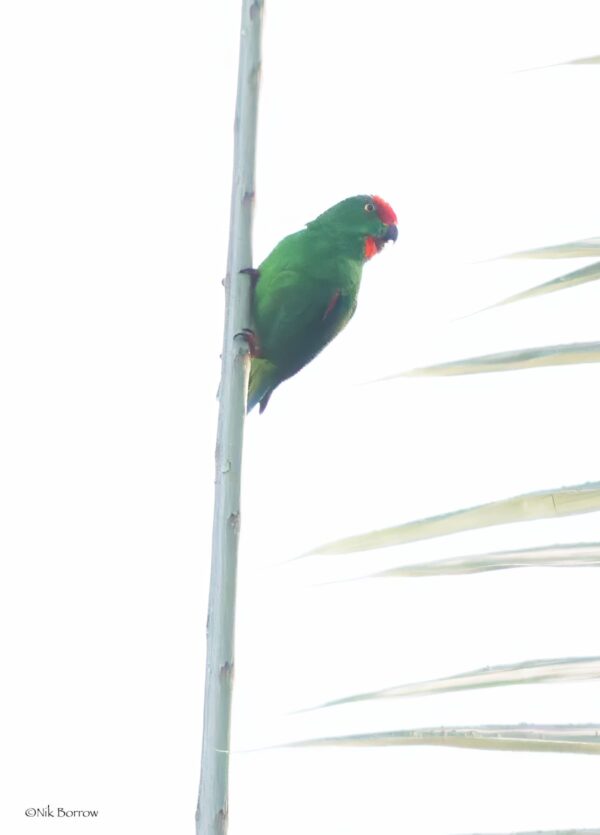
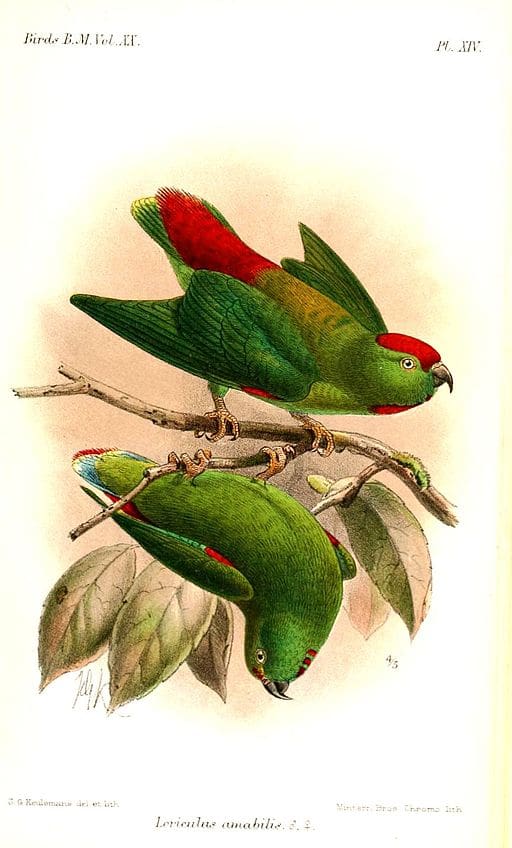
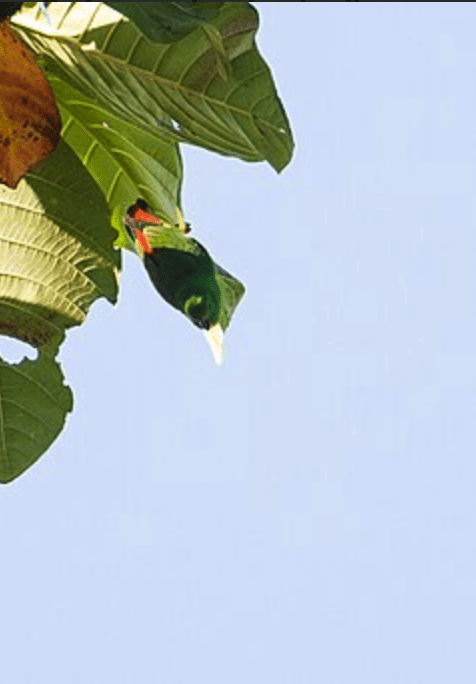

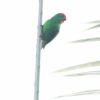
![© John Gerrard Keulemans [Public domain] An Iilustration depicts Moluccan Hanging Parrots](https://gt2024.parrots.org/wp-content/uploads/2023/01/wpt_Moluccan-Hanging-Parrot_1167-100x100.jpg)
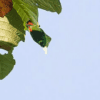
![© Ross Tsai [CC BY-SA 2.0] via Flickr A wild Moluccan Hanging Parrot clings to a branch](https://gt2024.parrots.org/wp-content/uploads/1990/07/Moluccan-Hanging-Parrot-Ross-Tsai-100x100.jpg)